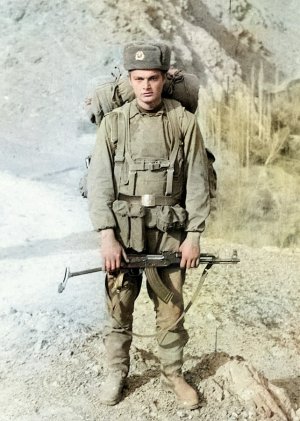Private George E. Richards, 2nd Battalion, The Royal Australian Regiment (2RAR), of Mildura, Victoria (Australia), sorting rations - in this case, tins of Carnation milk, Korea, 4 March 1954.
View attachment 298863
The scene was captured by British Commonwealth Forces Korea (BCFK) Public Relations photographer Phillip Hobson (1922-2006), whose original caption to the image provides invaluable insight into Richards, who would celebrate his 22nd birthday the week the photograph was taken.
George Richards was from Riverlea, Yannathan, near Lang Lang in Gippsland, Victoria, where his brothers were share farming on a diary property.
Born at Mildura, he went to Melbourne at an early age and did his schooling at Canterbury and Balwyn. When he left school he joined the Postal Department and was stationed at Tallangatta in north-east Victoria for three years before moving to Yannathan and working with his brothers.
In 1952 he joined the Army and went to Japan in January 1953 before subsequently being posted to Korea. He was still there in July when the cease fire was announced, which, for Richards, would become the one of the most outstanding memories of his time in Korea.
At the time he was a regimental stretcher bearer with D company on "The Hook" feature, scene of some of the fiercest fighting in the closing stages of the hostilities.
"It seems hard to believe that it was all over at first", Richards recounted, "most of all the sudden quietness, no guns firing, and no need to keep under cover. That was something I will always remember."
He had no regrets joining the Army or serving in Korea. In fact, Hobson noted in 1954, he was prepared to serve a further term in Korea.
"It has been a wonderful experience", Richards acknowledged, "and I've met some marvellous mates. There's something about Army life that's really worthwhile".
George E. Richards would turn 89 this year; does anyone know if he's still with us or has family?
Photographer: Phillip Hobson (1922-2006)









